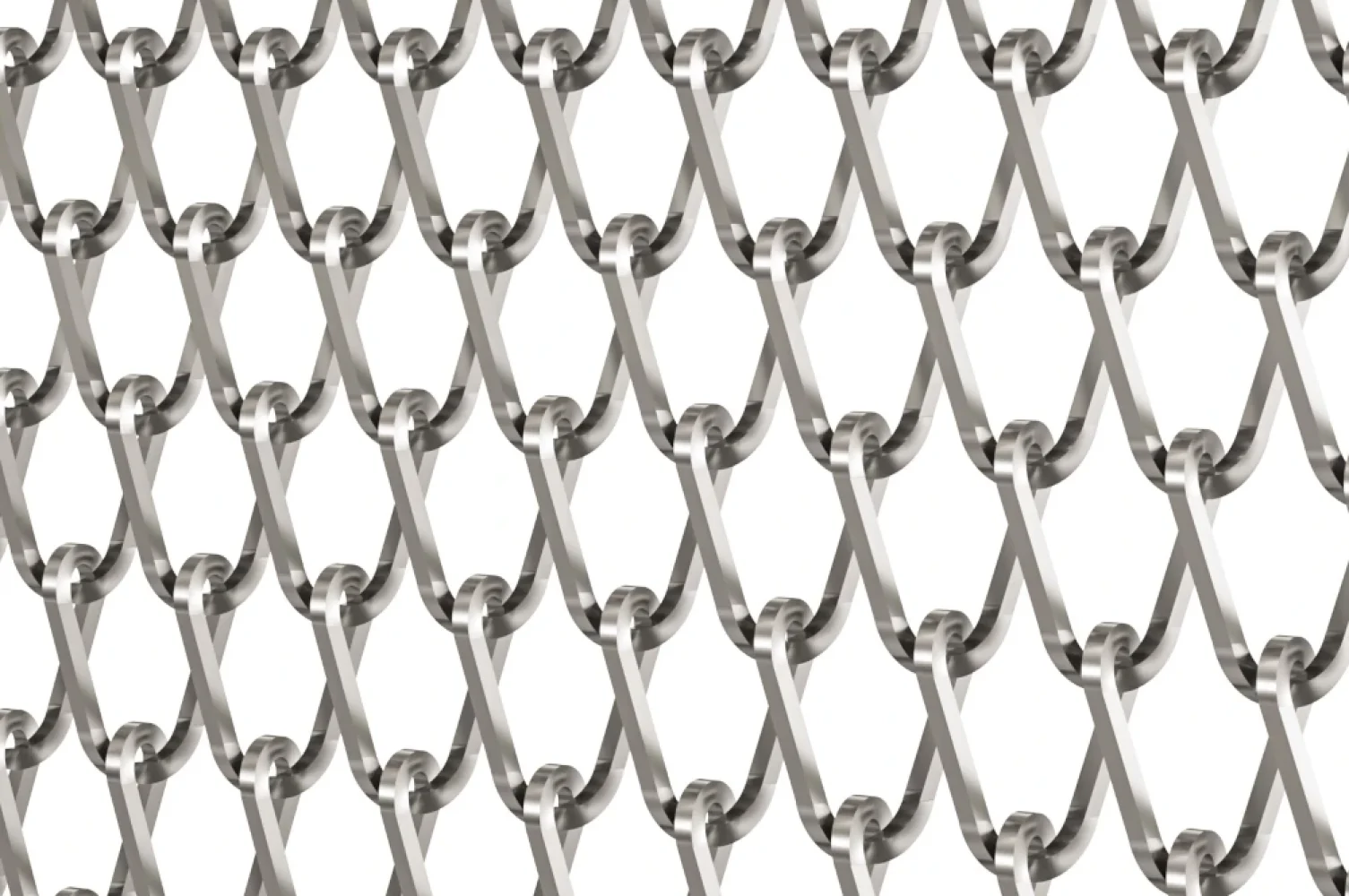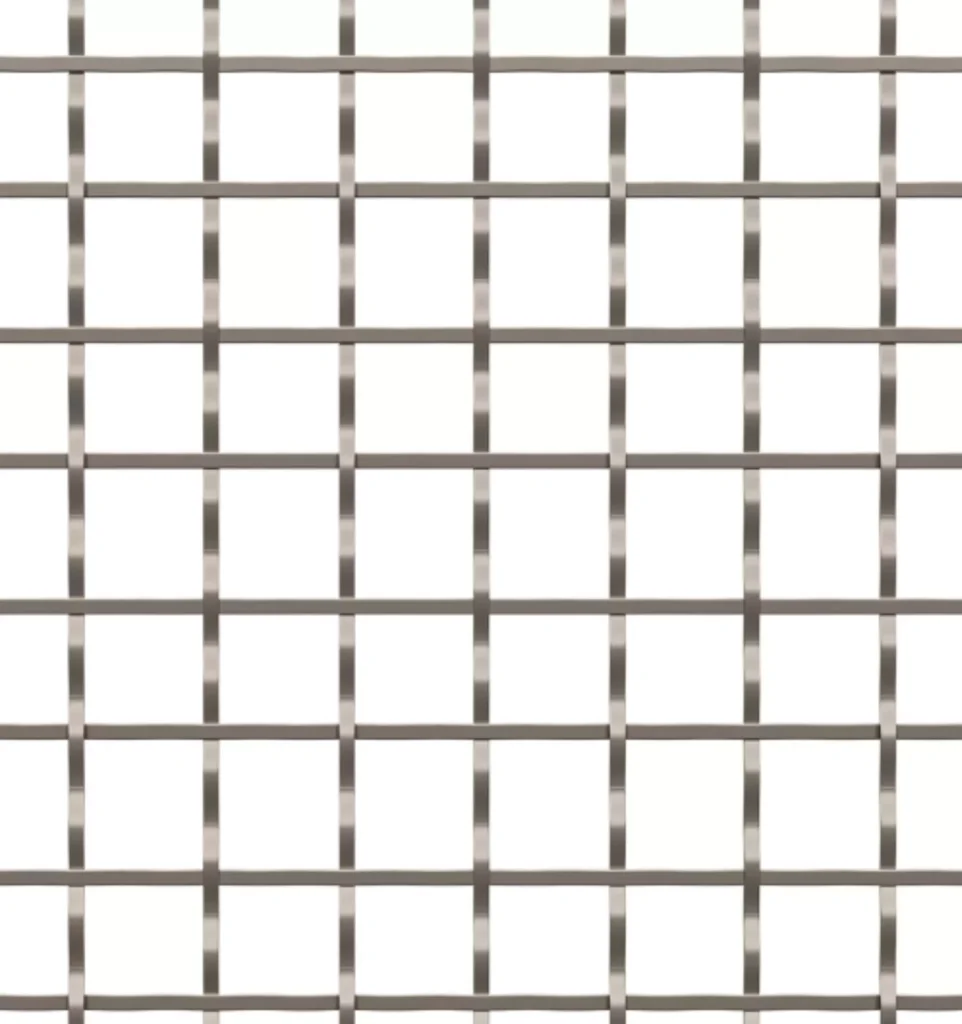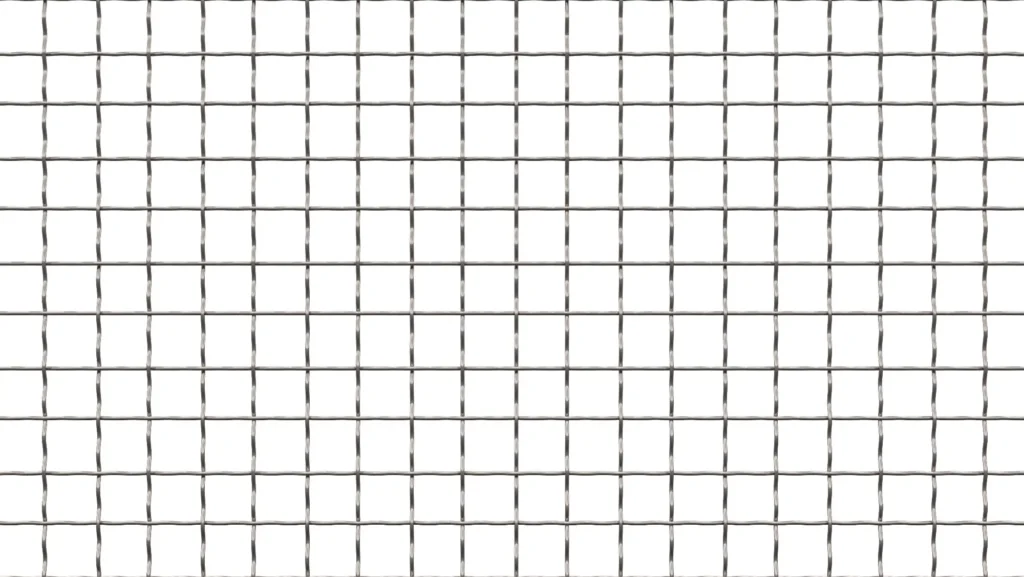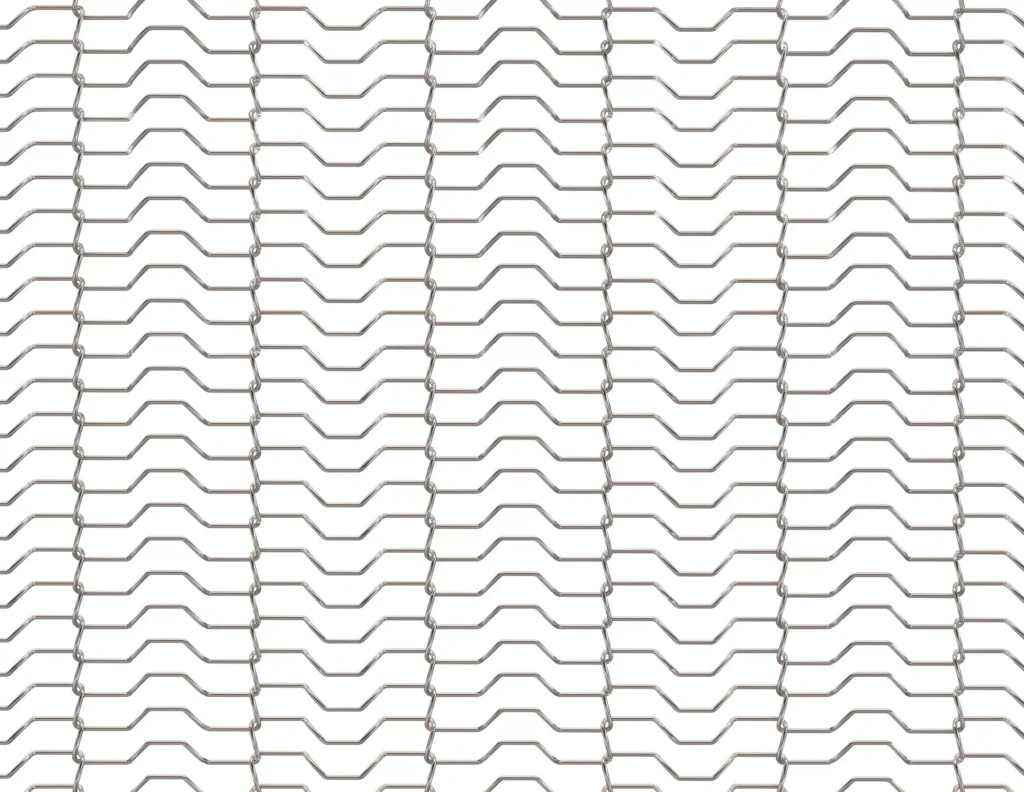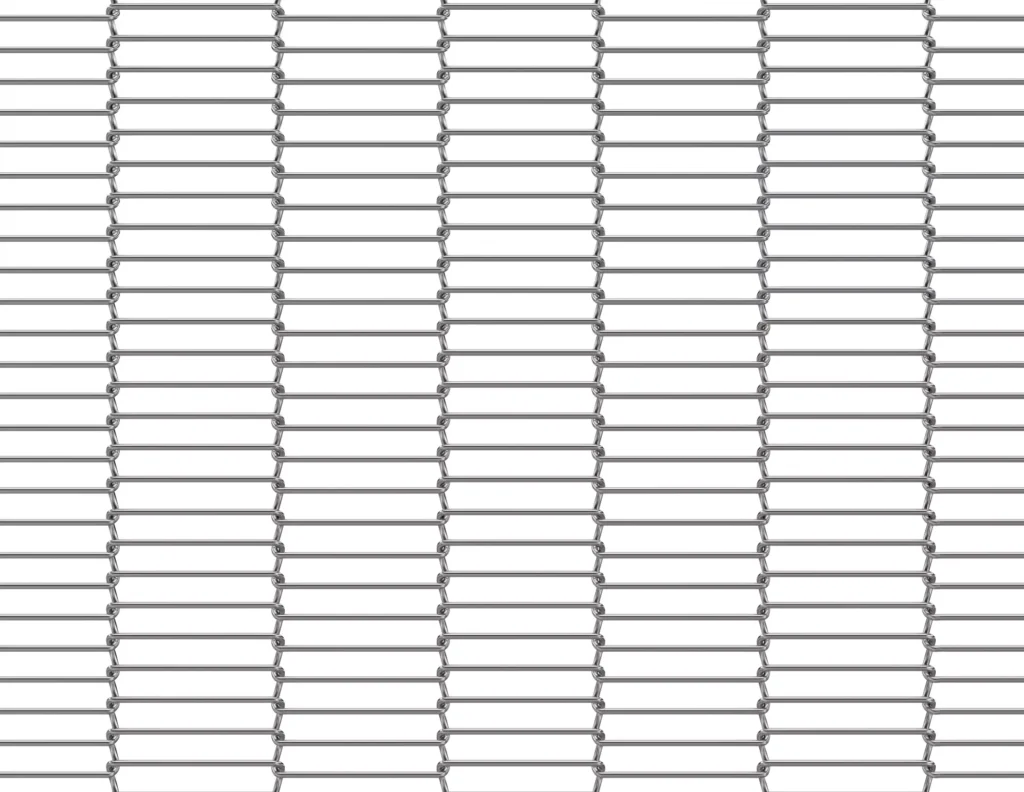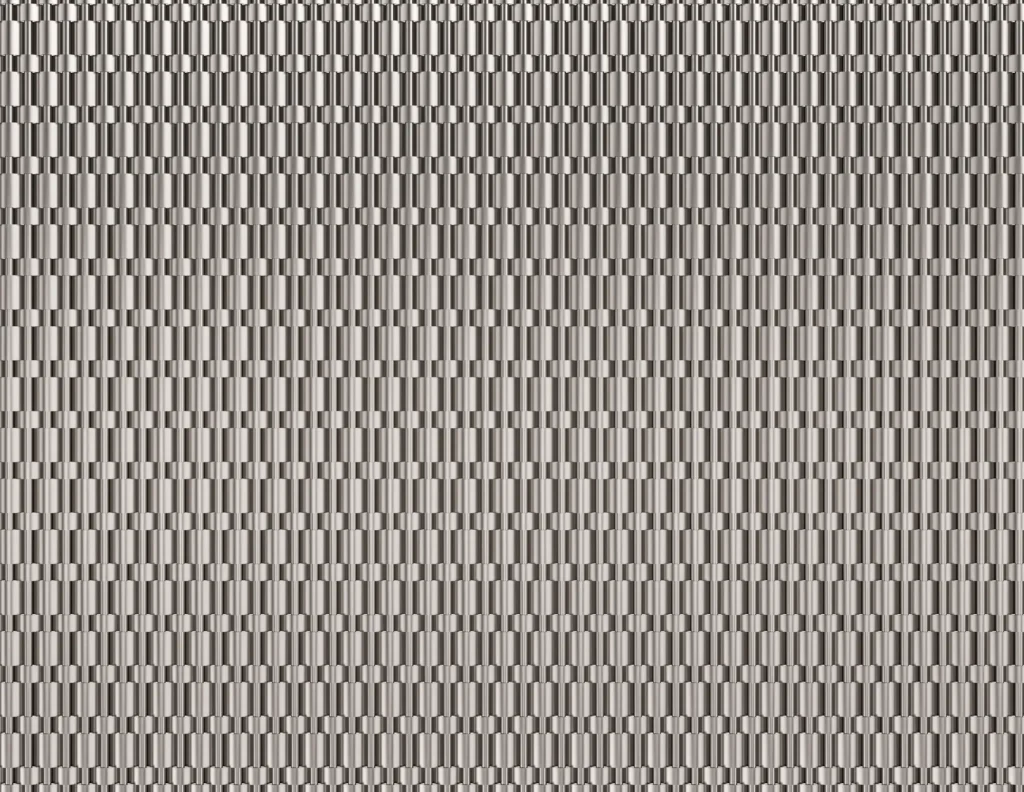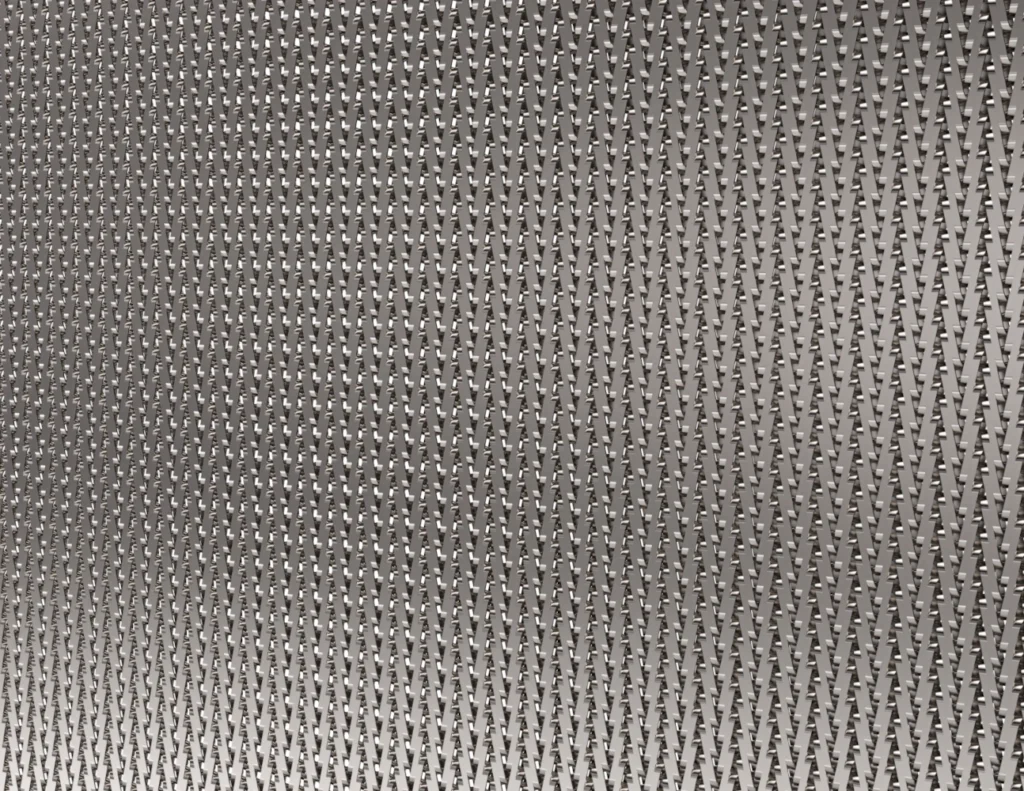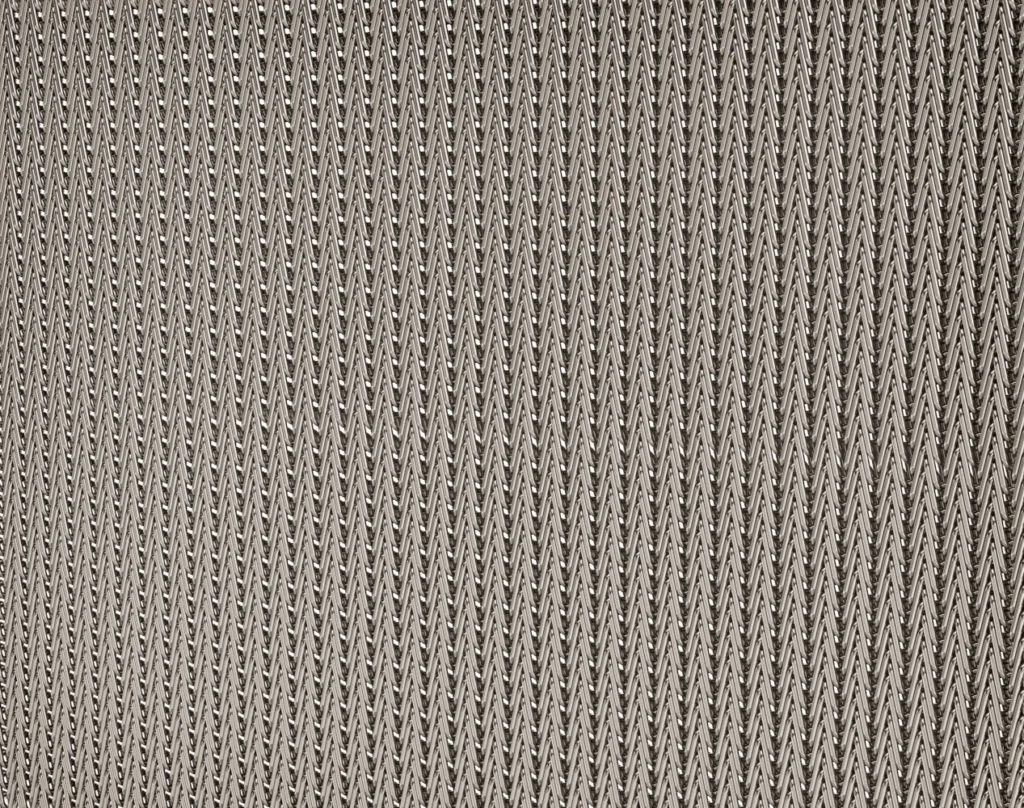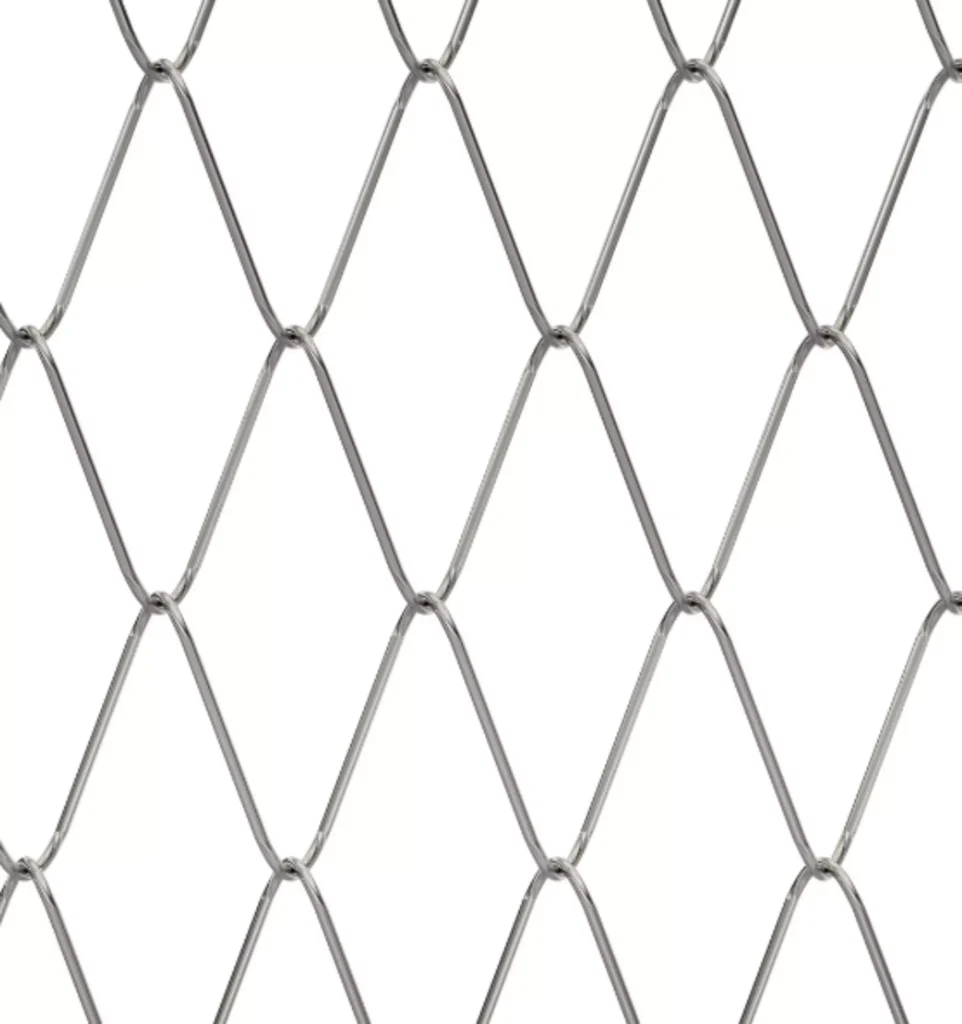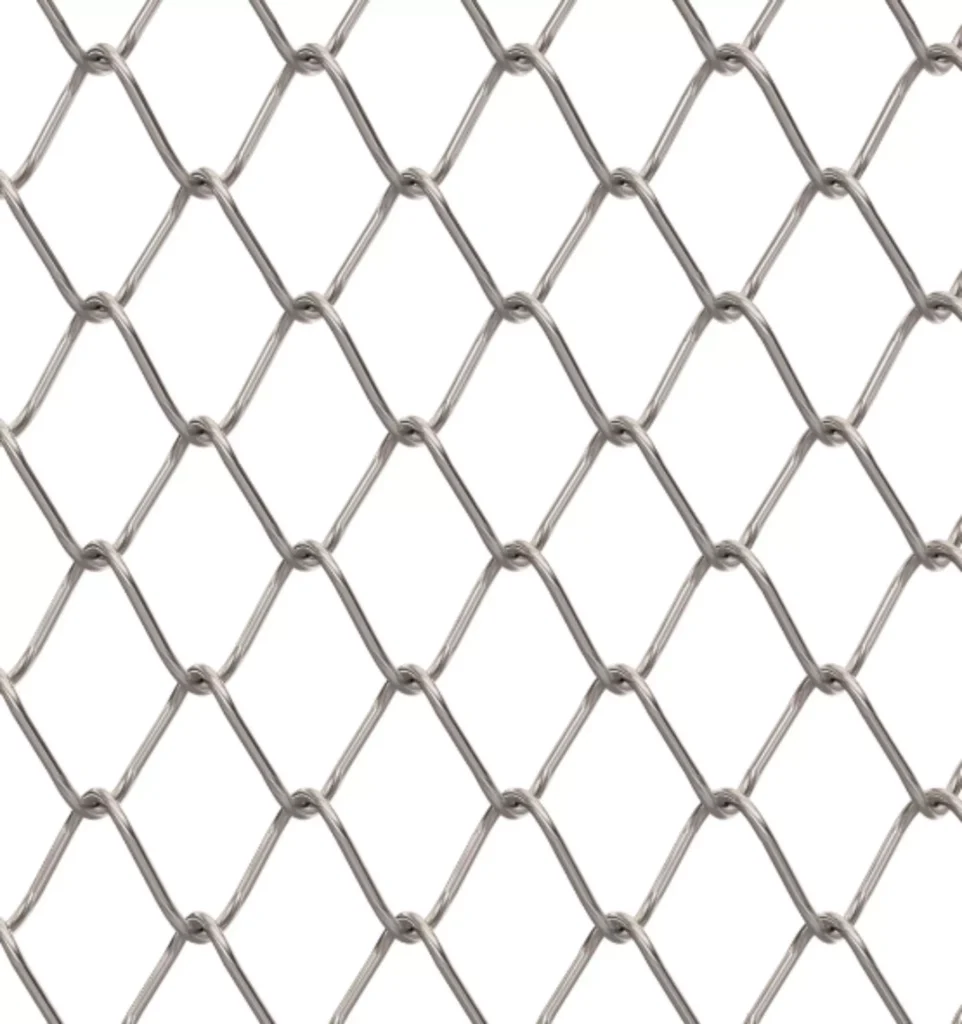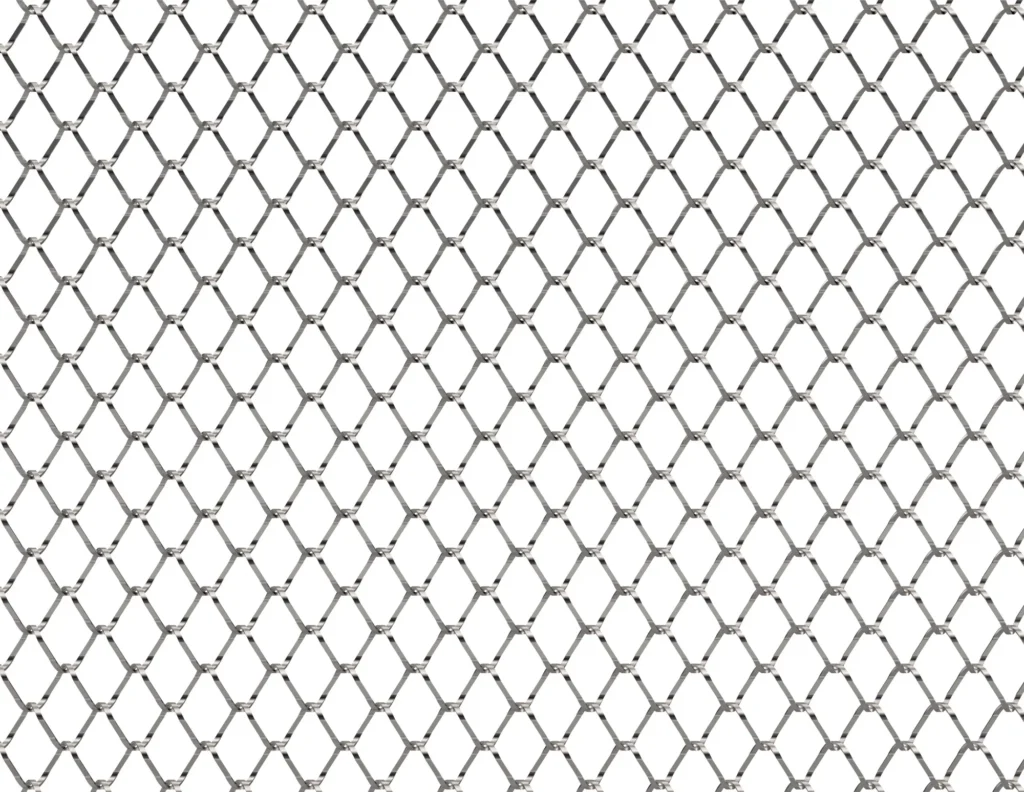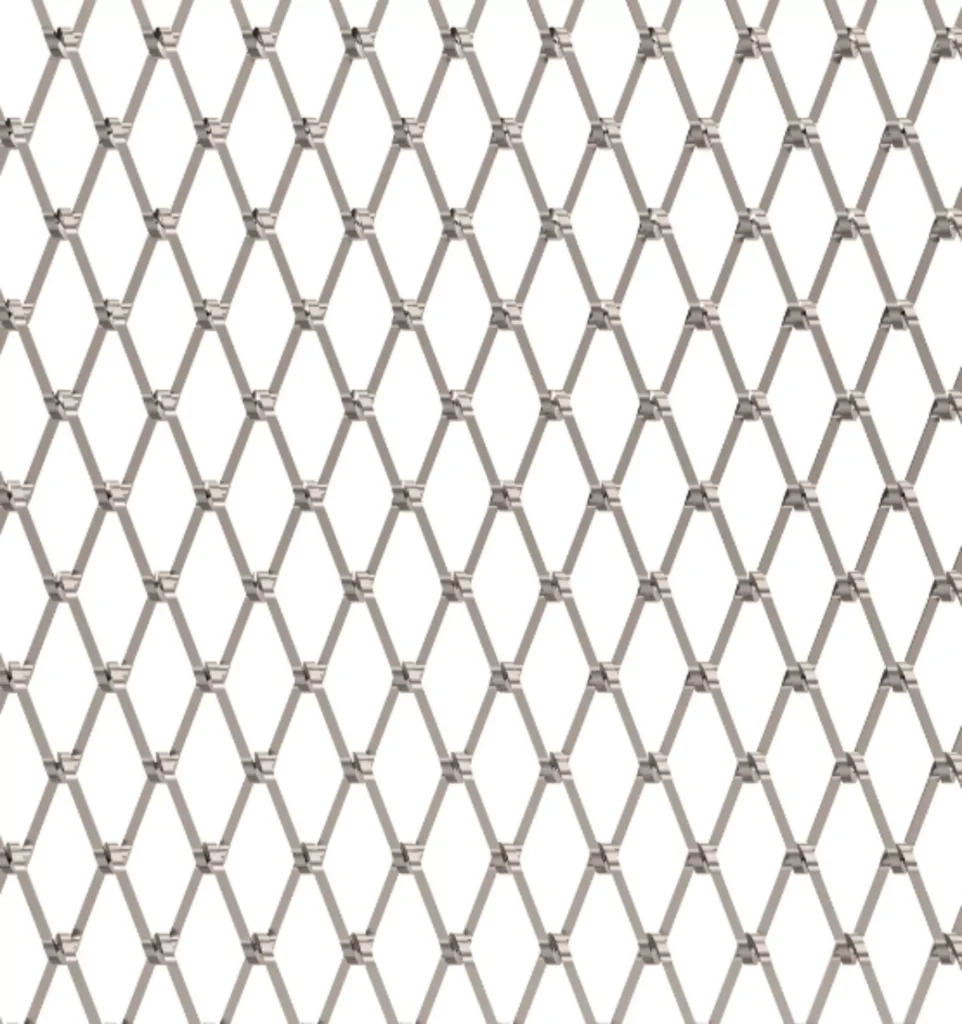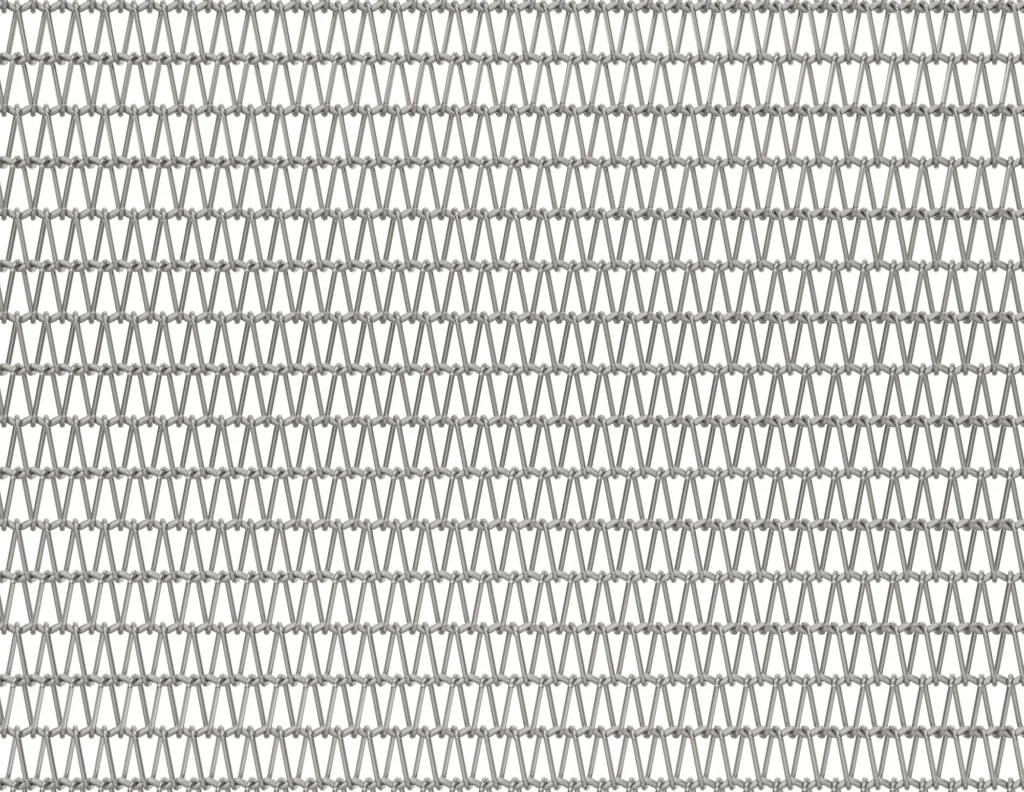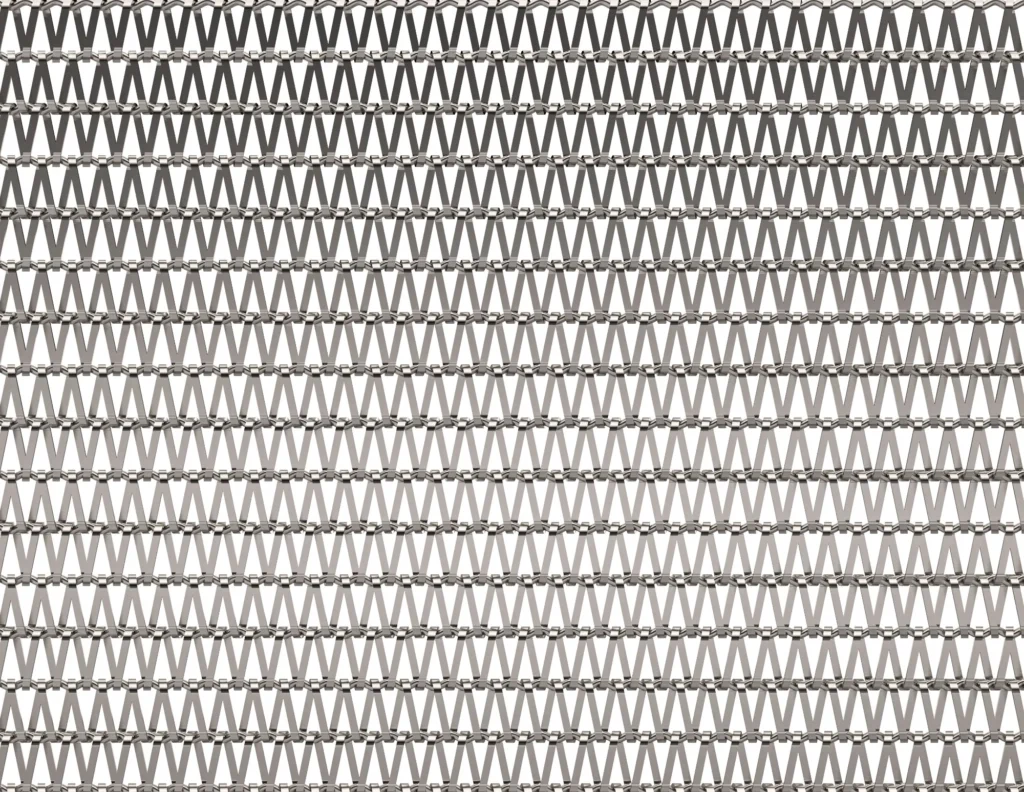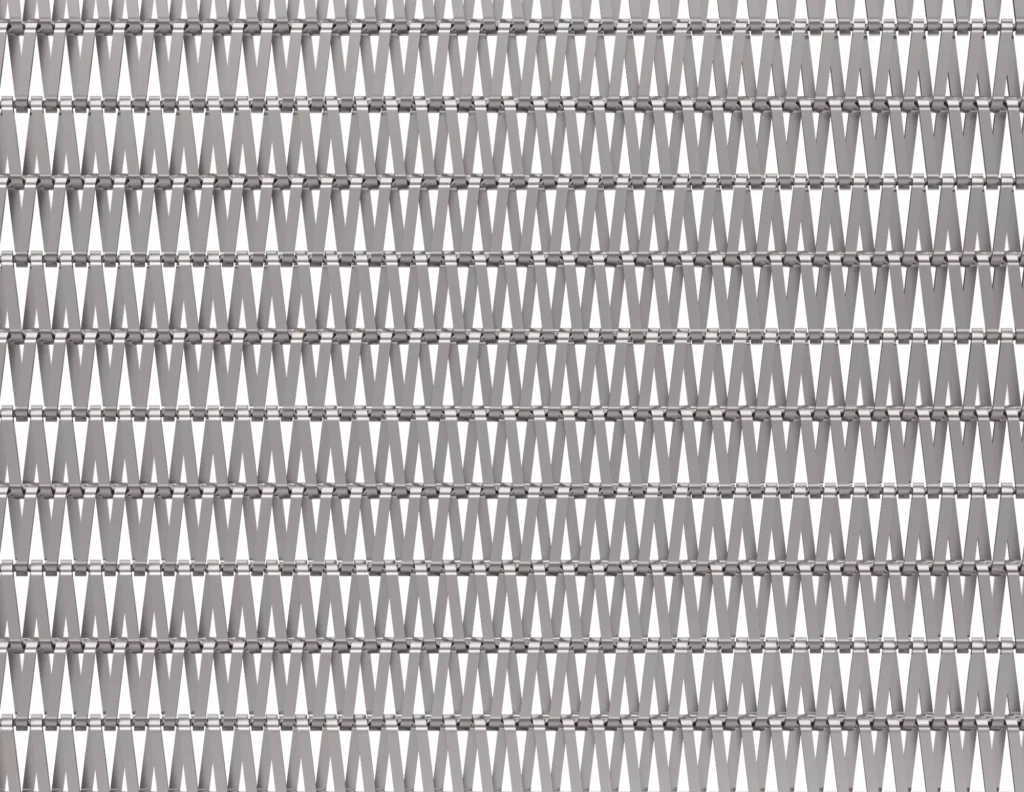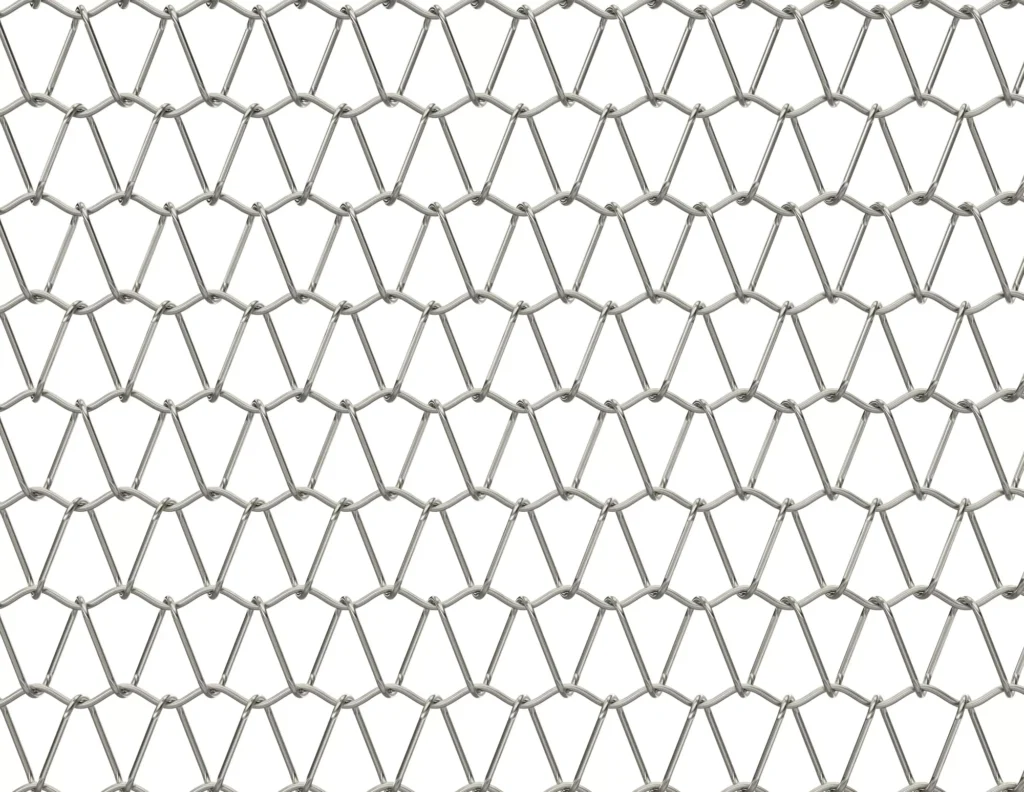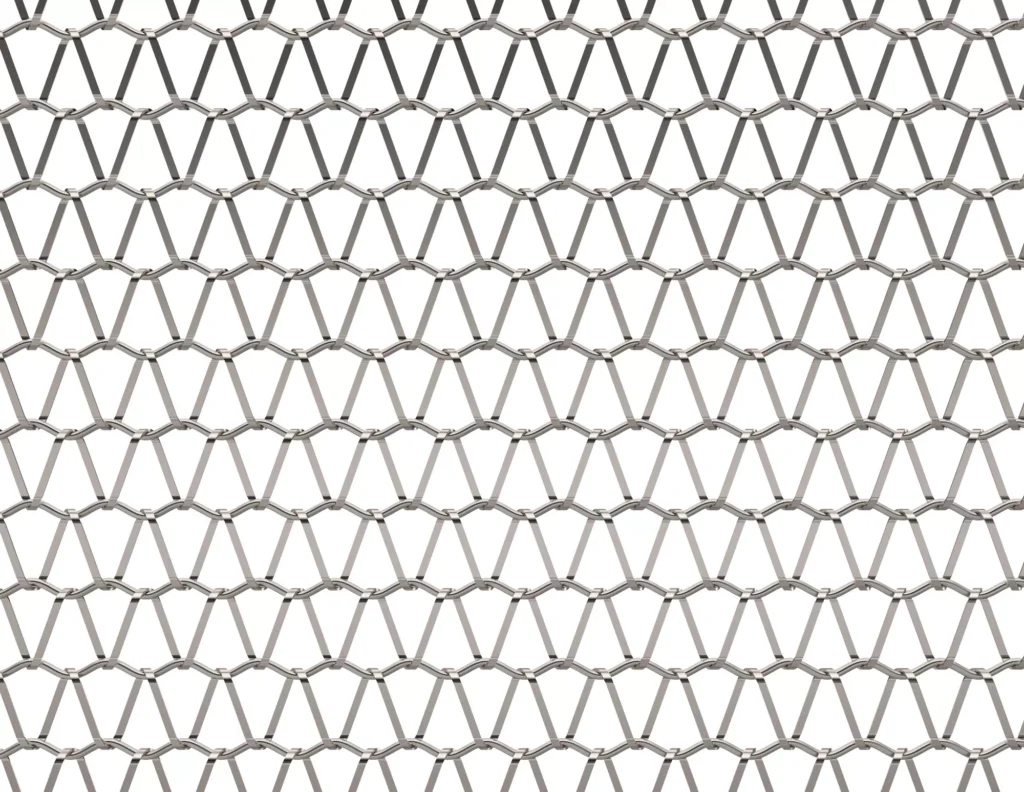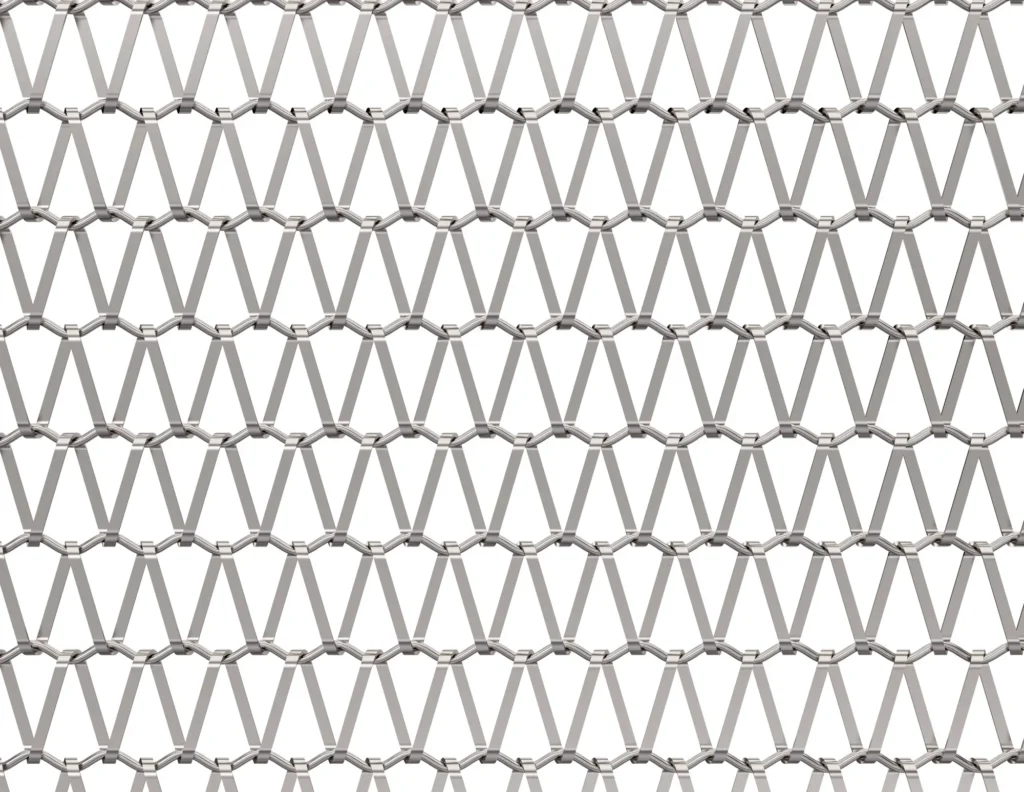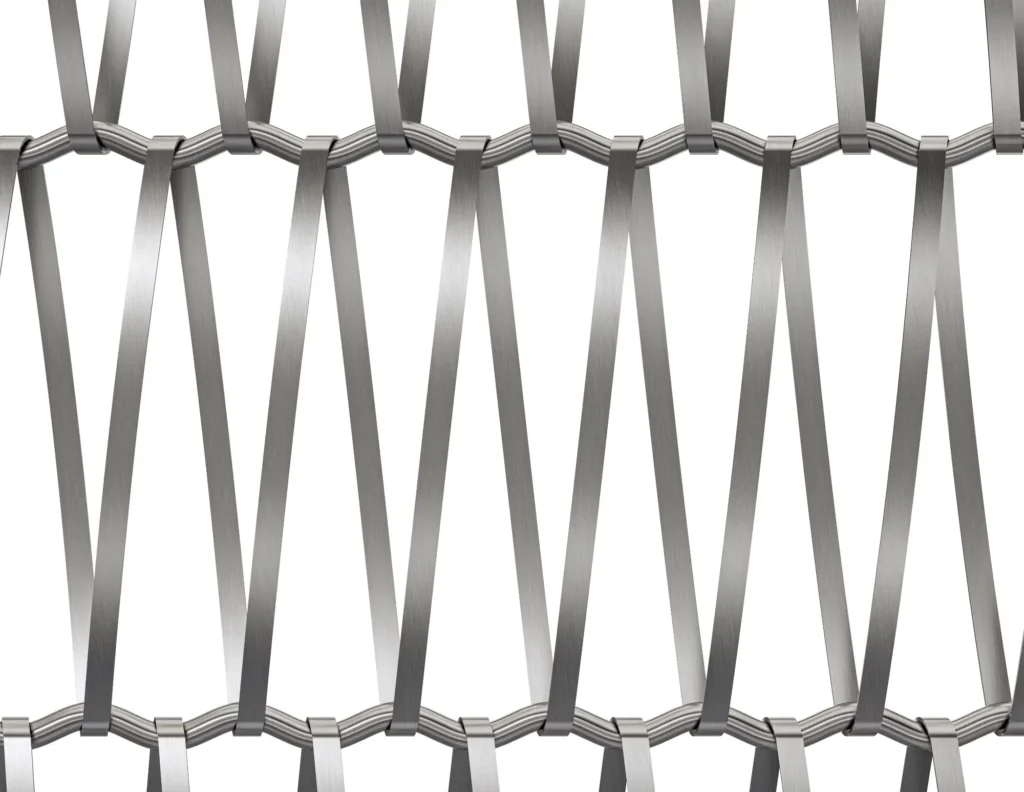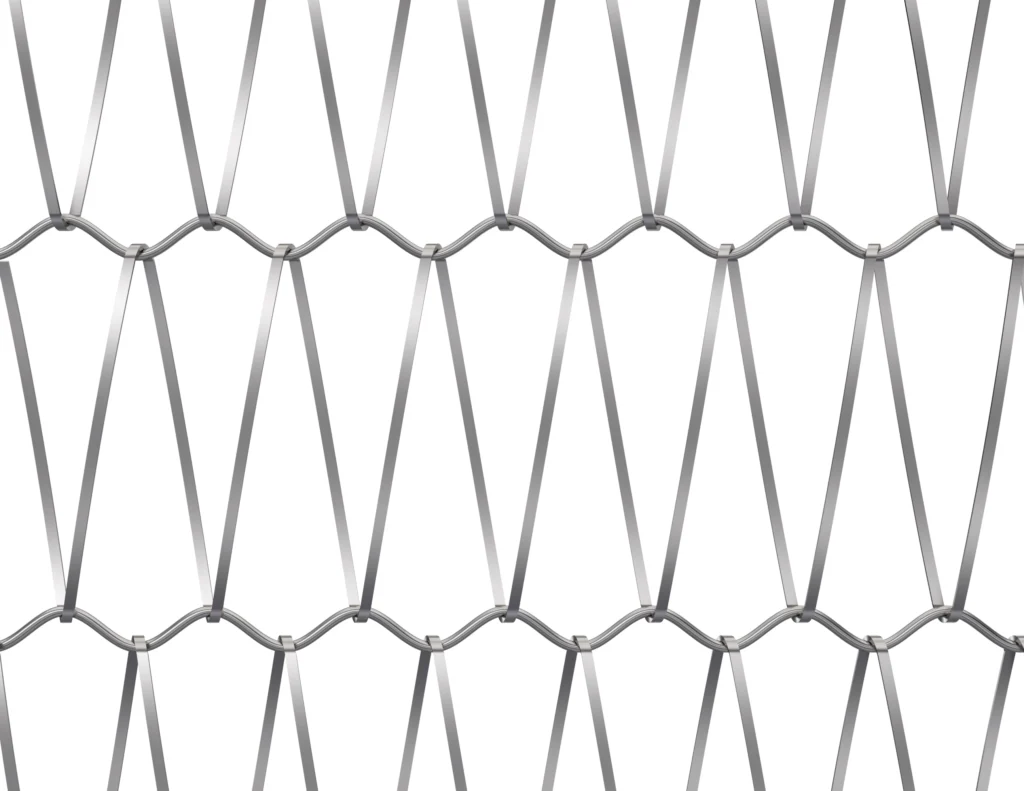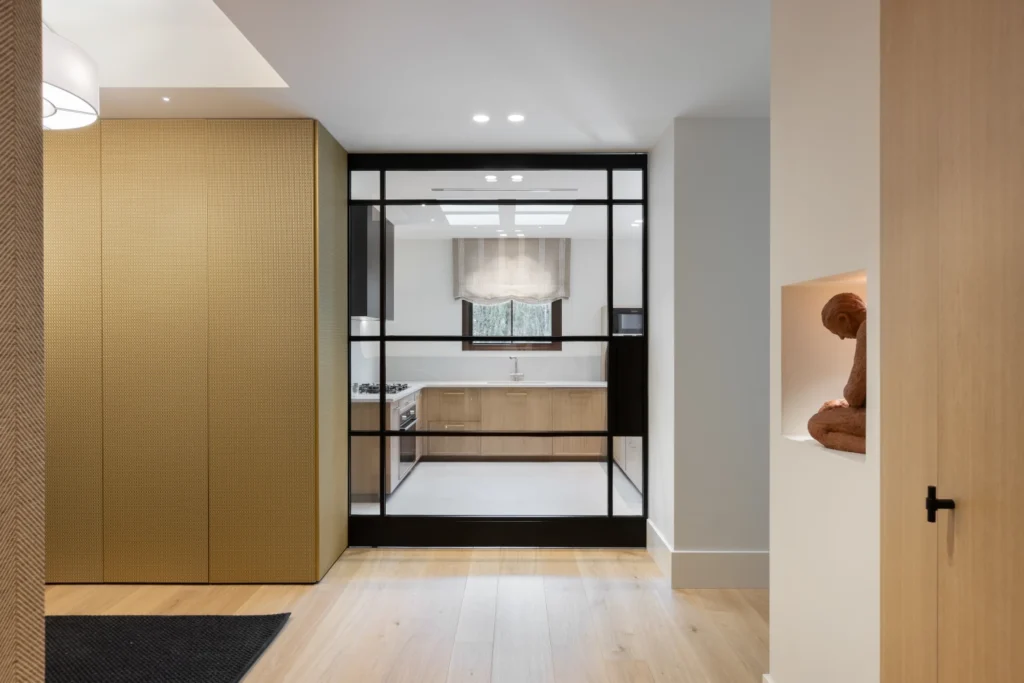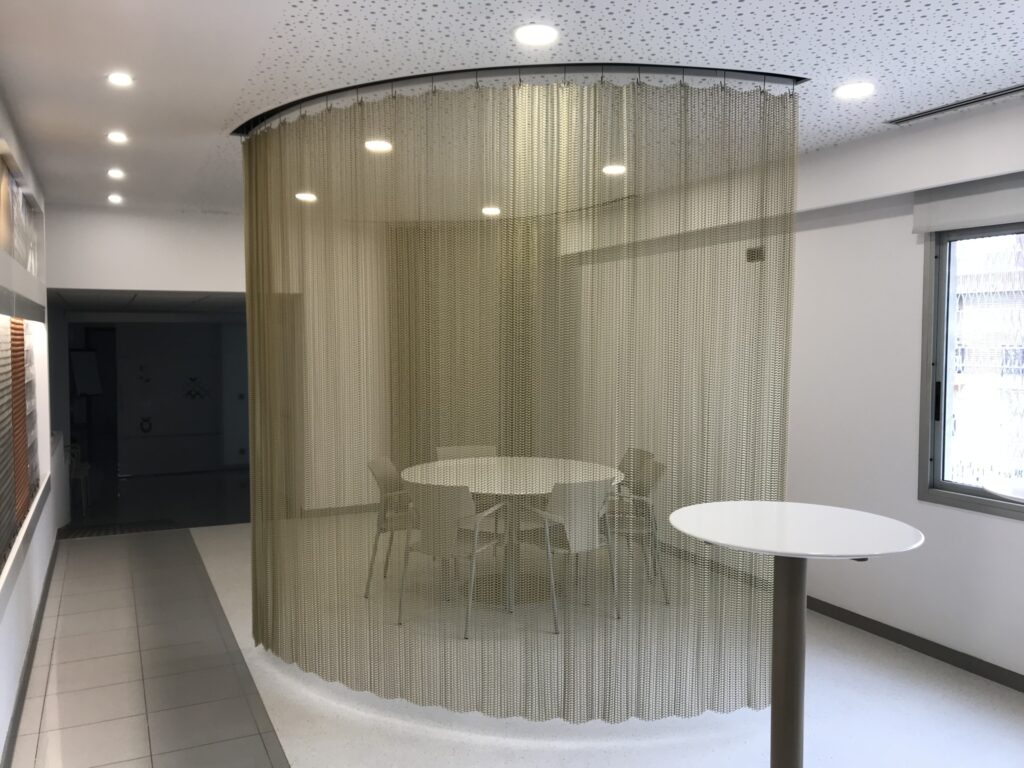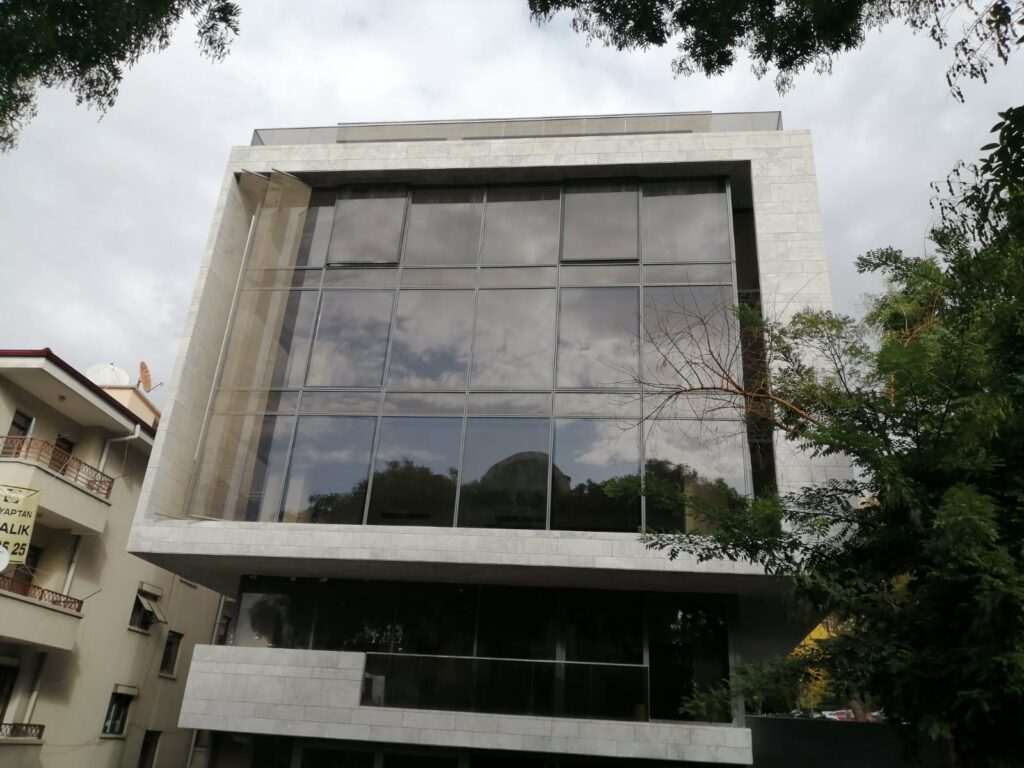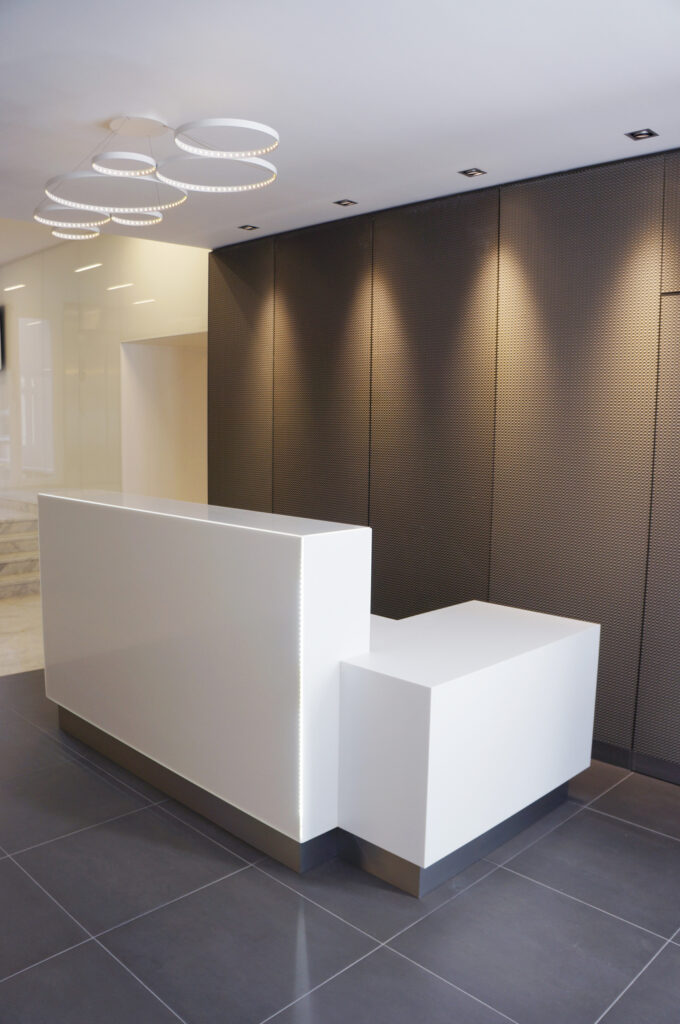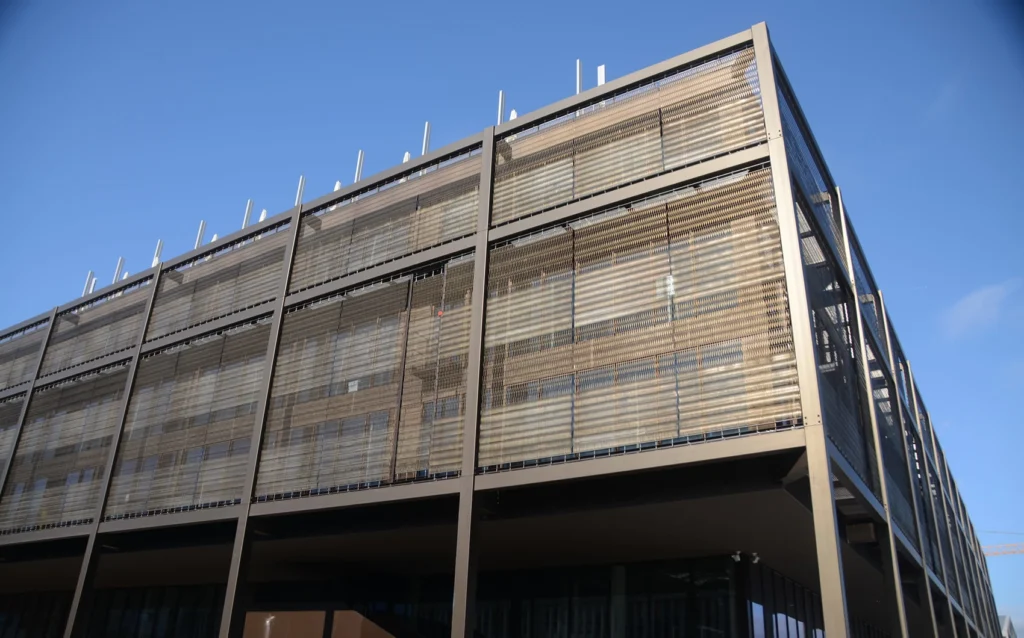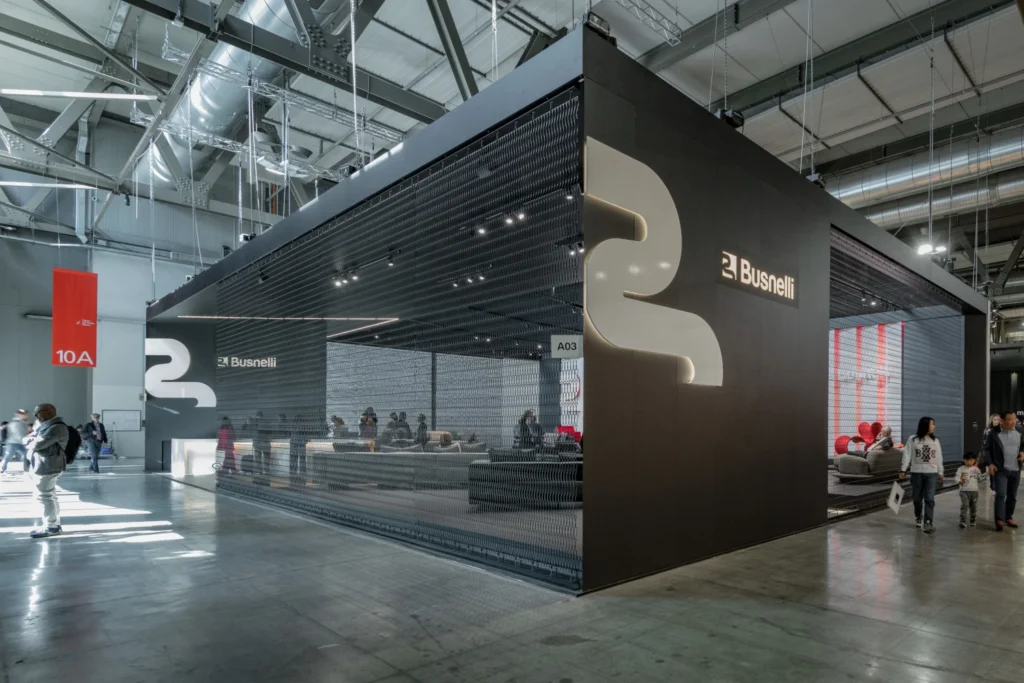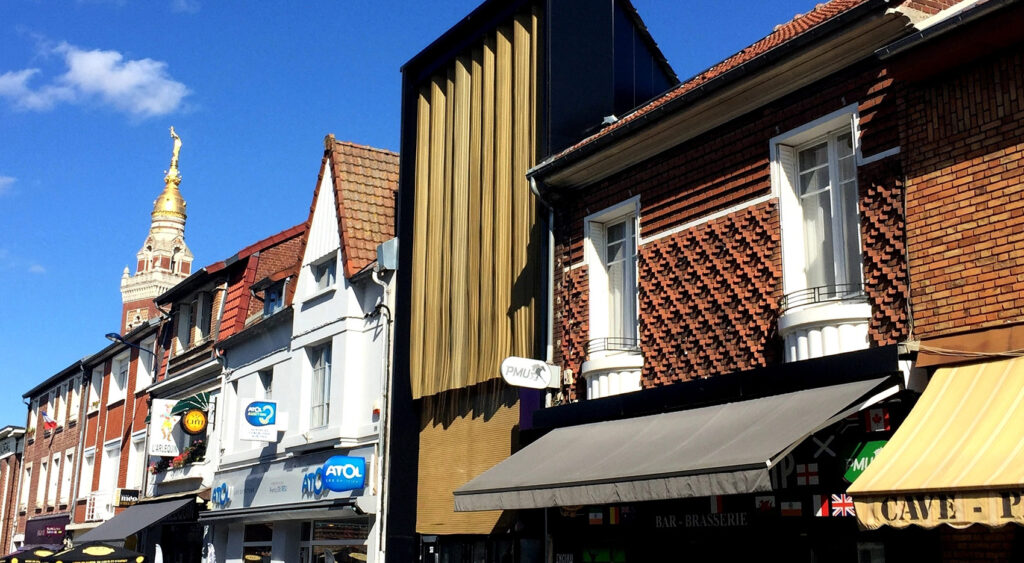Our aluminum meshes are perfect for interior design and architecture. Ideal for partitions, retail displays, or ceiling enhancements. The lightest metal mesh available.
Aluminum is a very light metal characterized by its excellent performance in the construction industry. Its specific weight is 2.7 g/cm3, one third the weight of steel. It stands out for its excellent properties such as lightness, malleability, durability, and corrosion resistance. It has a sustainable life cycle from beginning to end. Therefore, it can be said that aluminum is a 100% recyclable material. Its recovery rate in construction reaches 95% and its recycling saves 95% of the energy used in its initial production.
It is the most widely used material in building enclosures: interior dividers, curtains, interior decorations, fences, etc.
It offers an infinite number of designs and constructive possibilities.
It can be anodized or painted in any color and optical effect, using different surface finishes, in order to satisfy the decorative needs of any designer. Anodizing and lacquering also serve to provide greater durability to the material and increase its resistance.
Other materials and finishes available on request. Ask us!
Available models with Aluminum Mesh
Explore our range of aluminum mesh models, the lightest option available. Aluminum reduces weight significantly, especially in denser patterns with less open space. Discover various designs perfect for any interior design and architectural application, offering both beauty and functionality.
Projects using our Aluminum Mesh
Discover our diverse projects featuring aluminum meshes. Thanks to the anodizing process, our aluminum gains significant aesthetic appeal and usability. While aluminum excels in interiors, it also performs exceptionally well in exterior structures where weight is crucial.




